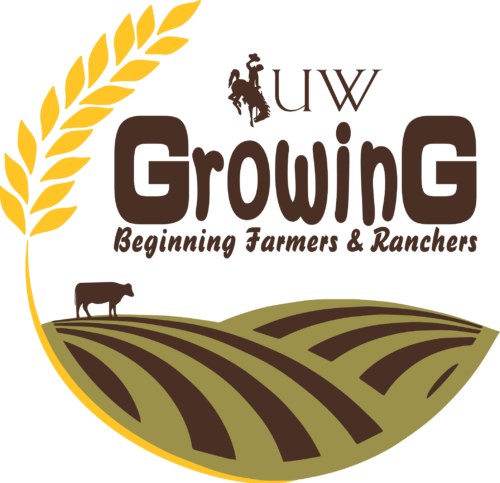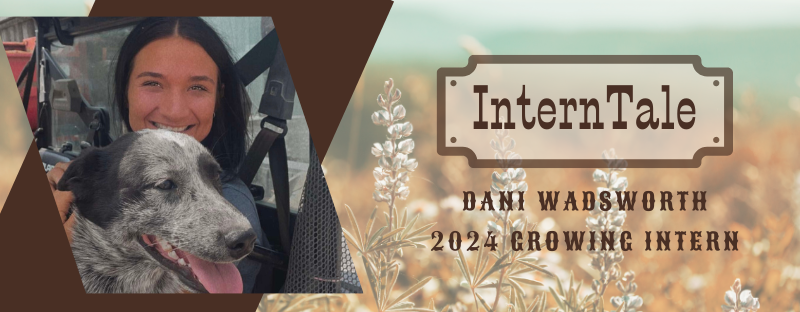Doctoring Cattle
#bfrdpwy #aginternship #RightRisk
We are wrapping up the end of trailing season this week. We finished our second group of about 100 pairs and 75 spayed heifers. We took these about halfway up the mountain into their first summer pasture. We also vaccinated the calves from the first group of 330 pair before sending them up to their summer pastures. I was able to give one vaccine. I gave a shot that has vitamins and helps prevent pink eye. I usually give shots at home too, so I was very comfortable with it. It was different having to do 330 head though.
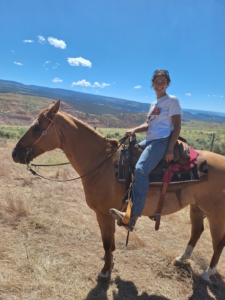
Back home we have about 100 head. My host family had a good set up where we could vaccinate three calves at a time and that made it go by fast. We also had 10 people helping so that made things run smoothly. First, we sorted off the cows and the strays, so the calves were in the pen. We had two people sorting calves out and pushing three down the alley. We then had three people pushing the calves into the chute. There were two of us giving shots and one giving a nasal spray that helps prevent pneumonia.
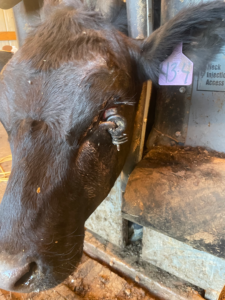
Then there was a person helping keep the calves still so that we could give shots and do the nasal spray. We did a lot of doctoring this week as we gathered yearlings and finished the second group of cows. I was able to give an antibiotic shot to a calf in the pasture, which I thought was really fascinating. When we were gathering the replacement heifers (yearlings). We had to doctor two heifers and a bull. The one heifer must of rubbed her face on a post and got an electric fence insulator stuck in her eyelid – I have never seen that before. I think it is interesting how so much can happen when cows are out in a pasture. We were able to get the insulator off by cutting a part of the insulator off and then it just fell off.
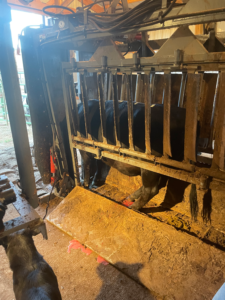
To doctor it we poured some antibiotic powder in the eye and then put a patch on since she was blind from the insulator hitting her eye. The other heifer must have got a stick stuck on the bottom of her stomach. We noticed a big bump on her stomach, and we first stuck the cyst with a needle to make sure that it was filled with pus and then when we verified it was, we took a scalpel and cut an inch incision to drain it. Lastly, the bull that we doctored had foot rot, so we gave it an antibiotic shot and bolus pills.
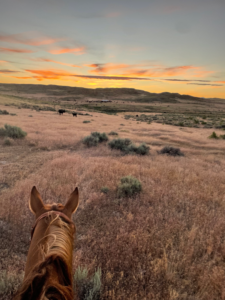
I learned a lot about doctoring cattle this week, but I still have some questions. I would like to know how cows can get lump jaw and how it doesn’t affect them. I have never heard of lump jaw until I came out here. There are quite a few cows with it here and want to learn more about how they can still be efficient and still stay healthy. From what I understand it is usually an infection in their teeth from cheatgrass.
One thing I would challenge from this week is not giving a dewormer when you vaccinate calves. From what I have learned, cows need to be dewormed their first three years of life to be efficient and healthy. I wonder if my host deworms at a different time or if they don’t deworm them unless they are replacement heifers.

I will remember a lot of what I have learned this week. Doctoring and vaccinating cattle is definitely my favorite thing to do because it is so interesting how cattle can become sick and just the different things in the pastures that can harm them. I think it is awesome to be able to prevent cattle from getting sick and doctoring them so that they can stay efficient and be healthy. I also am glad I have been learning about the different vaccines and medications that are given so I know what has worked.
Submitted by: Danielle Wadsworth
Edits by: GrowinG Internship Team
